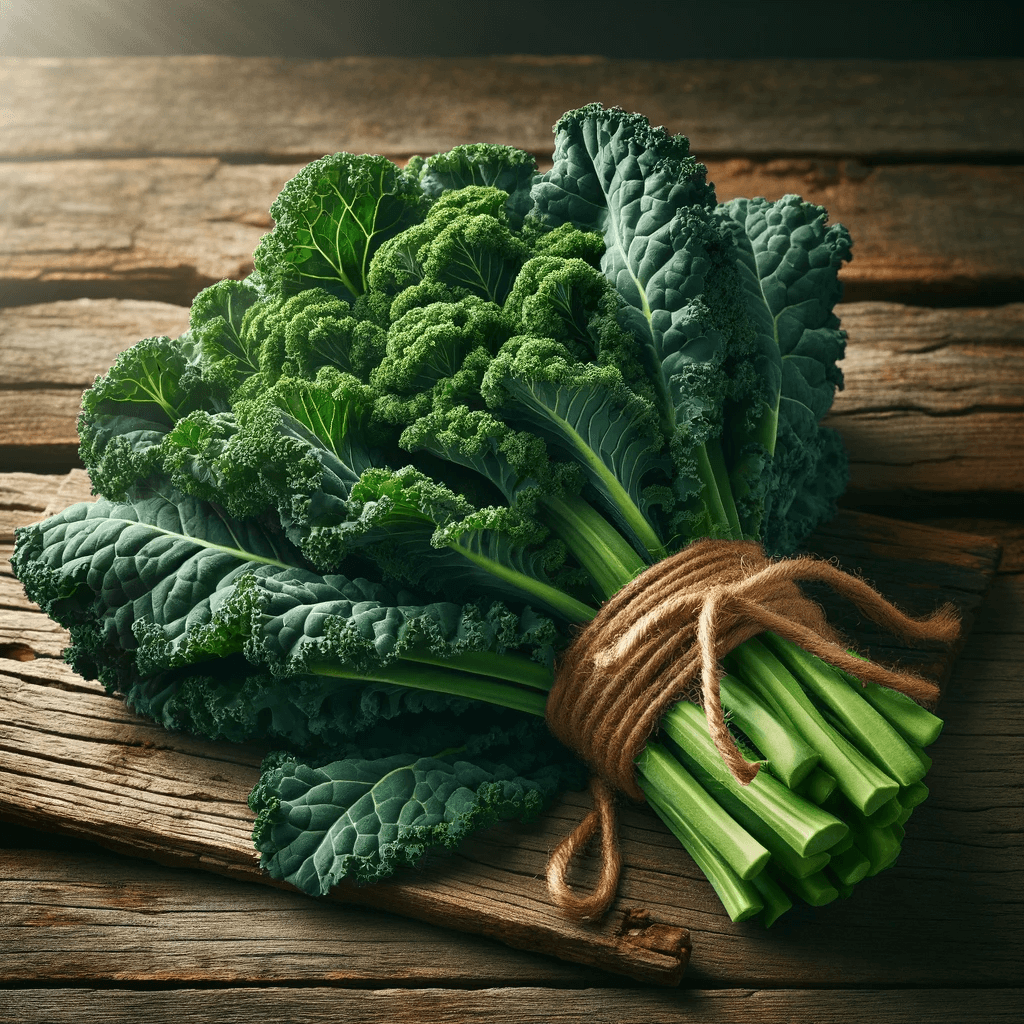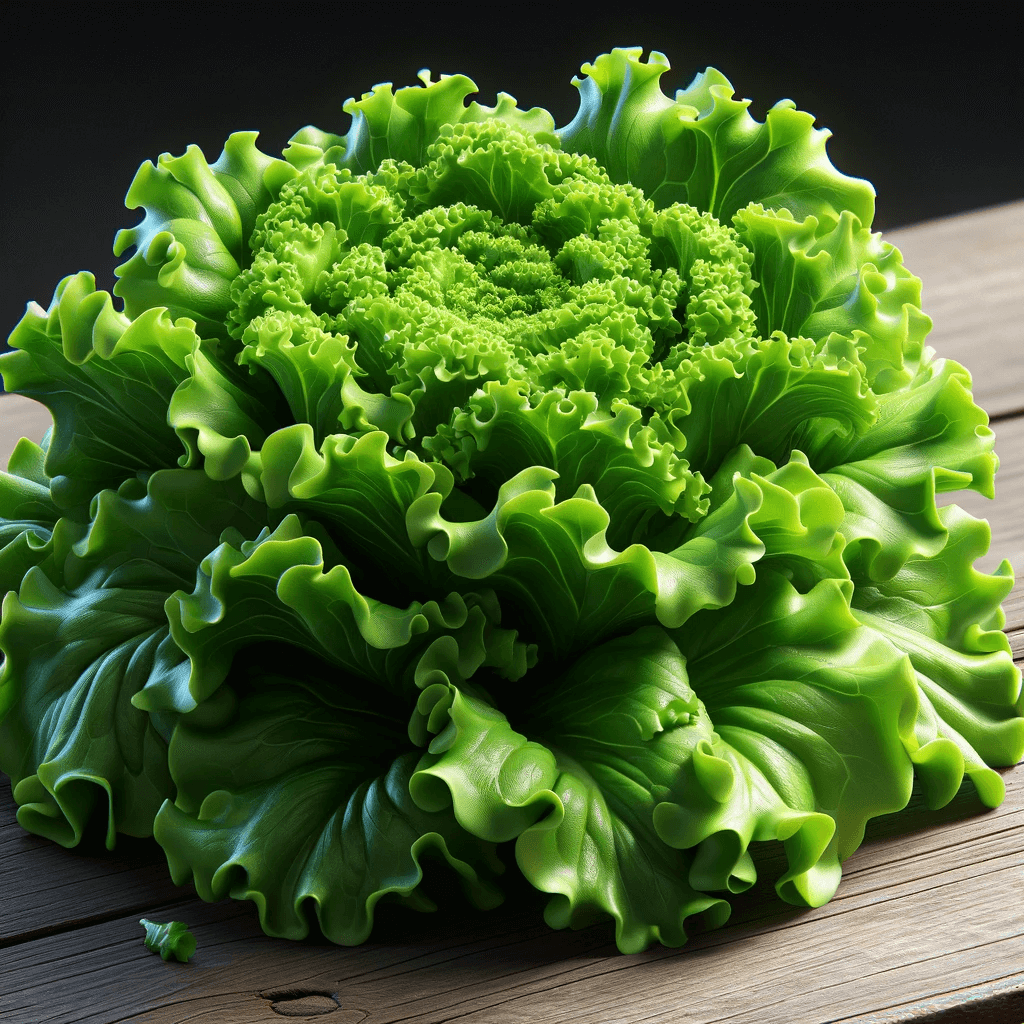Viroflay spinach, scientifically known as Spinacia oleracea, is renowned for its large, dark green leaves and tender texture. This heirloom spinach has captured the hearts of gardeners and culinary enthusiasts due to its rich flavor and exceptional nutritional profile. From vibrant salads to mouthwatering sautés, this versatile spinach variety adds a touch of elegance to any dish it graces. Gardeners love to know how to grow viroflay spinach from seed.
The Vitality of Starting from Seed: Cultivating a Connection with Nature
Growing spinach from seed has become a lost art in today's fast-paced world, where convenience often overrides quality. However, rediscovering the joy and rewards of nurturing plants from their humble beginnings can be an immensely fulfilling experience.
By sowing Viroflay spinach seeds, you embark on an intimate journey with nature, witnessing the miracle of life unfold before you. Growing spinach from seed offers numerous advantages over purchasing pre-grown seedlings.
Firstly, it grants you complete control over the entire growth process - from selecting high-quality seeds to managing optimal conditions for germination. Secondly, by starting from scratch, you can ensure that your plants are free from any potential diseases or pests that might be present in store-bought seedlings.
$9.95
Grow Fresh Greens Year-Round with Our 5 Lettuce Seeds Variety Pack - Heirloom, Non-GMO, Perfect for Outdoor & Indoor Gardening Introducing our 5 Lettuce Seeds Variety Pack – the perfect addition to your garden, whether you’re a seasoned grower or… read moreLettuce Seed Assortment | 5 Variety Pack
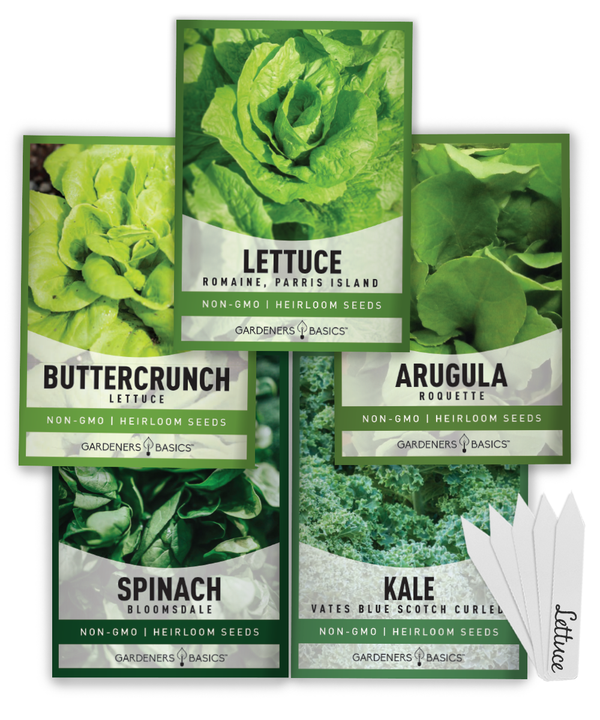
Diving into the Origins: A Brief Overview of Viroflay Spinach
Originally hailing from France but now cultivated across the United States and around the world, Viroflay spinach holds historical significance as an open-pollinated variety treasured for generations. Its name pays homage to its birthplace in Viroflay commune in north-central France.
This heirloom spinach seeds for planting variety is reputed for its impressive size. The broad leaves tower above other spinach varieties, fully grown with dark green hues that exude freshness and vitality.
Viroflay spinach is known to thrive in excellent weather conditions, making it an ideal choice for spring and fall cultivation. Its adaptability to different climates and ease of growth has made it a favorite among novice and seasoned gardeners.
Viroflay Spinach Basics
- Days till maturity: Viroflay spinach typically reaches maturity in about 40-50 days. This period can vary slightly depending on the growing conditions.
- Planting depth: The seeds should be planted at about half an inch (1.25 cm).
- Plant spacing: Space the seeds approximately 2-3 inches (5-7.5 cm) apart, with about 12 inches (30 cm) between rows.
- Days to germination: Viroflay spinach seeds generally germinate within 5-10 days after planting, given ideal conditions.
- Does it matter if these seeds are started indoors or directly sown? Viroflay spinach can be started indoors or directly sown. Starting indoors can extend the growing season, especially in areas with short springs or falls. Direct sowing is more straightforward and effective as spinach can be sensitive to transplanting.
- Should these seeds be planted in full sun or partial shade? These seeds prefer a location with full sun to partial shade. While they enjoy sunlight, they also thrive in cooler temperatures and can benefit from some shade during hotter parts of the day.
- When to harvest? Harvest can begin when the leaves are large enough to eat, usually about 3-4 inches long. This is typically around 40-50 days after planting.
- How tall does the plant get? Viroflay spinach plants can grow tall, about 10-12 inches (25-30 cm).
- How wide does the plant get? The plant can spread about 6-8 inches (15-20 cm) wide.
- Native: This spinach variety is native to France and was developed explicitly in Viroflay.
- Family: Viroflay spinach belongs to the Amaranthaceae family.
Embracing the Power of Health: The Nutritional Value of Viroflay Spinach
In addition to its remarkable taste, Viroflay spinach boasts an exceptional nutritional profile that sets it apart from other leafy greens. Packed with vitamins A, C, E, and K and an array of essential minerals such as iron and calcium, this spinach variety is a powerhouse for promoting overall health and well-being. The high levels of antioxidants found in Viroflay spinach help combat oxidative stress within the body, reducing the risk of chronic diseases.
Furthermore, its generous fiber content aids digestion while supporting cardiovascular health. Incorporating this nutrient-rich vegetable into your diet can enhance immune function, improve bone strength, promote healthy skin, and promote healthy weight management.
By delving into the world of growing Viroflay spinach from seed, you cultivate a connection with nature and reap the benefits of consuming one of nature's most nourishing gifts. Join us as we explore how to successfully bring these magnificent plants from tiny seeds into flourishing greenery that will grace your table with their flavorful bounty.
$15.95
Fresh Lettuce Seed Assortment – 10 Heirloom Varieties, Perfect for Hydroponics, Indoor & Outdoor Gardening! Our 10 Salad Greens Lettuce Seeds Variety Pack is the ultimate selection for any home gardener or hydroponics enthusiast! This carefully curated assortment features heirloom, non-hybrid,… read moreSalad Greens Lettuce Seed Assortment | 10 Variety Pack
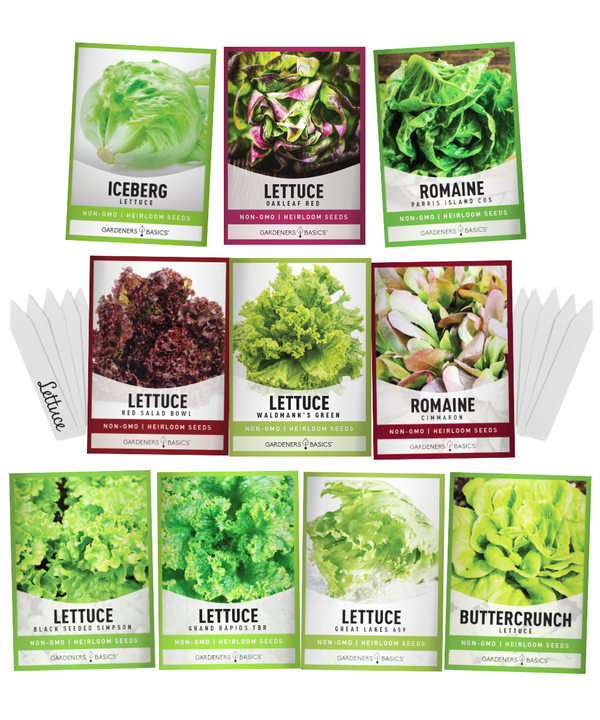
Description and Characteristics of Viroflay Spinach
Viroflay spinach, known scientifically as Spinacia oleracea 'Monstrueux de Viroflay,' is a highly esteemed spinach with exceptional qualities. This open-pollinated heirloom spinach variety originates from France and has gained popularity worldwide, including in the United States. One of the standout features of Viroflay spinach is its noticeably large, dark green leaves.
These leaves are renowned for their impressive size, often reaching up to 10 inches long. The deep green color adds an appealing aesthetic to any garden or plate.
This particular spinach variety is categorized as a smooth-leaf type, which means it lacks the characteristic crinkled or savoyed texture found in other cultivars. However, the absence of wrinkled leaves does not compromise its taste or quality.
Viroflay spinach offers a delightful, tender texture that pairs well with various culinary dishes. Its broad leaves provide more leafy greens per harvest compared to smaller-leaved varieties.
Finding a Reputable Viroflay Spinach Seed Supplier or Nursery
Gardeners Basics has high-quality spinach seeds for sale. Thank you for trusting us with your heirloom seed purchases.
Preparing the Soil for Planting
Assessing soil quality and pH level requirements for Viroflay spinach
The success of growing Viroflay spinach from seed dramatically depends on the soil condition in which it is planted. Assessing the soil quality and pH level is crucial, as Viroflay spinach thrives in specific conditions. This perennial spinach variety, scientifically known as Spinacia oleracea 'Monstrueux de Viroflay,' prefers a slightly acidic to neutral pH range of 6.0 to 7.0.
To determine the pH level, a simple kit available at most garden centers can be used or consult your local agricultural extension service for more accurate testing methods. Should the soil's acidity fall outside the ideal range, necessary amendments can be made accordingly using organic matter or lime for adjustment.
Incorporating organic matter to improve soil structure and fertility
To ensure optimal growth and yield of Viroflay spinach, it is imperative to focus on improving your soil's structure and fertility by incorporating organic matter. Rich, well-draining soils are ideal for this cool-season crop.
Begin by loosening the top layer of soil with a garden fork or tiller to enhance aeration and water permeability. Organic matter such as compost or well-rotted manure should then be added generously to enrich the soil's nutrient content while improving its ability to retain moisture.
Working with approximately two inches of compost per square foot ensures an effective boost in fertility without smothering delicate roots during planting. Gently incorporate this organic goodness into your garden bed's top six to eight inches using a rake or hand tools.
By meticulously preparing your plot with these essential steps, you create an environment that sets your Viroflay spinach seeds up for success. The ideal pH level and well-nourished soil lay a solid foundation, enabling your spinach plants to thrive and reward you with abundant, tender, nutritious leaves throughout the growing season.
Remember, Viroflay spinach is no ordinary green; it is a culinary delight that demands attention to detail. Providing the perfect growing conditions demonstrates your dedication to cultivating this unique heirloom spinach variety, ensuring a delectable harvest that will leave you craving fresh spinach at every meal.
Sowing Seeds Indoors
Timing considerations for indoor sowing
Selecting the ideal timing for sowing your Viroflay spinach seeds indoors is crucial to ensure successful germination and healthy seedling development. As an open-pollinated variety, Viroflay spinach adapts well to various climates within the United States.
Aim to start sowing your seeds 4-6 weeks before your region's last expected frost date to give them enough time to grow before transplanting them outdoors. If you reside in a colder climate, starting your seeds indoors allows you to extend the growing season and enjoy fresh spinach earlier.
Preparing seed trays or pots with a well-draining potting mix
Preparing suitable containers and potting mixes is essential to provide optimal conditions for seed germination. Opt for deep trays or biodegradable pots that allow ample root growth, as Viroflay spinach develops a robust root system. Fill the containers with a high-quality, well-draining potting mix specifically designed for starting seeds.
This mix should be rich in organic matter, providing adequate nutrients while ensuring proper drainage. Sow Viroflay spinach seeds approximately ½ inch deep into each container, spacing them about an inch apart.
Gently cover the seeds with additional potting mix and press it down lightly using your fingers or the back of a spoon. Ensure they are evenly distributed and have enough space for roots to develop without overcrowding.
Maintain consistent moisture by gently watering the containers after sowing until excess water drains from the bottom. Place clear plastic covers or wrap over the containers to create a greenhouse effect that helps retain moisture and warmth until germination occurs.
Once germination occurs (usually within 7-14 days), remove any covering and place the trays or pots in an area with bright indirect light. Rotate the containers daily to promote even growth and prevent seedlings from stretching toward the light source.
Remember, Viroflay spinach thrives in cool weather, so maintaining a moderate temperature between 60-70°F (15-21°C) will facilitate optimal growth during this indoor phase. By providing suitable timing and nurturing seedlings with proper containers and potting mix, you set the stage for healthy Viroflay spinach plants ready for transplanting outdoors.
$2.49
Viroflay Spinach Seeds – Heirloom, Non-GMO, Non-Hybrid, Open-Pollinated Grow your own fresh, delicious, and nutrient-packed spinach with our premium Viroflay Spinach seeds! This French heirloom variety, also known as “Monstrueux de Viroflay,” produces large, tender, and smooth dark green leaves… read moreViroflay Spinach Seeds

Transplanting Viroflay Plant Seedlings Outdoors
Selecting an Appropriate Planting Site with Partial Shade
Finding the ideal location for transplanting your Viroflay spinach seedlings is crucial for their successful growth and development. When choosing a site, it is essential to consider the spinach plant's requirements, particularly its preference for partial shade.
While spinach typically thrives in cooler temperatures, providing some shade during hotter parts of the day can help prevent wilting and bolting. Look for an area that receives at least 4-6 hours of direct sunlight in the morning or late afternoon, preferably with partial shade during the midday heat.
This could be under a tree or next to a taller structure that provides some protection from intense sunlight. By finding this balanced spot, you create a microclimate that mimics the spinach's natural habitat—cool and moist—promoting healthier growth and tender leaves.
Hardening Off Seedlings Before Transplanting to Reduce Shock
To gradually acclimate your Viroflay spinach seedlings to their new outdoor environment, hardening off is essential in ensuring their survival and minimizing transplant shock. Hardening off allows young plants to adapt to outdoor conditions by gradually exposing them to wind, temperature variations, and increased light intensity.
Begin by placing your seedlings outdoors for just a few hours each day, gradually increasing exposure over several days or even a week. Start this process when there are no drastic temperature fluctuations forecasted.
You can place them in a sheltered spot or use row covers to protect them from strong winds or heavy rain. During this hardening-off period, pay attention to any signs of stress on the seedlings, such as wilting or yellowing leaves.
If necessary, reduce exposure time temporarily until they recover. Be patient; this gradual transition will help your Viroflay spinach seedlings develop stronger roots and adapt to outdoor conditions, ensuring a successful transplanting experience.
Remember, taking extra care when selecting an appropriate planting site with partial shade and hardening off your seedlings will significantly contribute to their overall health and resilience as they transition from controlled indoor environments to unpredictable outdoors. By providing these necessary adjustments, you set the stage for your Viroflay spinach plants to flourish in their new home and yield a bountiful harvest of luscious, tender leaves.
Caring for Viroflay Spinach Plants
Watering requirements to maintain consistent moisture levels
One of the crucial aspects of successful spinach cultivation is ensuring proper watering to maintain consistent moisture levels. Spinach, including the Viroflay variety, thrives in well-drained, moist soil but not soggy. Adequate hydration is particularly crucial during germination and early growth stages.
To ensure your spinach plants receive the appropriate amount of water, it is recommended to provide a deep watering session once or twice a week, depending on weather conditions and soil drainage. When irrigating spinach plants, it is essential to direct the water at the base of the plant rather than overhead.
This approach helps prevent foliage diseases and encourages stronger root development. Mulching around the base of the plants will aid in retaining soil moisture, reducing weed competition, and preventing soil erosion.
Fertilizing techniques to promote healthy growth and leaf production
Proper fertilizing techniques are paramount to optimizing healthy growth and abundant leaf production in your Viroflay spinach plants. Before planting spinach seeds or transplanting seedlings outdoors, preparing the soil with organic matter such as compost or well-rotted manure is advisable.
This enriches the soil with nutrients necessary for vigorous growth. Applying a balanced organic fertilizer with higher nitrogen content during active growth promotes leafy development in spinach plants.
Sprinkle a thin layer (according to package directions) around each plant while avoiding direct contact with leaves or stems. Repeat this process every 4-6 weeks throughout the growing season for optimal results.
Pest and disease management strategies, including natural remedies
Like any other plant species, Viroflay spinach can be susceptible to various pests and diseases that may hinder its growth and overall health. However, you can protect your spinach crop by implementing effective pest and disease management strategies, including natural remedies.
Consider introducing beneficial insects like ladybugs or lacewings to combat common pests such as aphids, caterpillars, or leaf miners. These natural predators feed on the pests and help control their population.
Additionally, practicing regular inspection of your plants and promptly removing any infested leaves or insects can prevent the spread of damage. For foliar diseases like downy mildew or leaf spot, it is advisable to avoid overhead watering and ensure proper air circulation by spacing plants adequately.
Applying a solution of neem oil mixed with water (following package instructions) can help control fungal diseases while minimizing harm to beneficial organisms. By adhering to these caring guidelines and adopting preventive measures against common spinach pests and diseases, you are well-equipped to nurture healthy Viroflay spinach plants that yield bountiful harvests of tender leaves rich in flavor and nutrition.
Note: The Viroflay spinach variety belongs to the Spinacia oleracea species and is an heirloom open-pollinated variety particularly popular in the United States for its large dark green leaves. It adapts well to both spring and fall plantings.
8. Harvesting Viroflay Spinach
Understanding when the leaves are ready for harvest
Before we delve into the proper harvesting techniques of Viroflay spinach, it is crucial to recognize the signs that indicate when the leaves are at their peak readiness for harvest. Generally, Viroflay spinach is ready to be harvested around 40 to 50 days after sowing the seeds. However, attention to visual cues such as leaf size and color is essential.
The leaves should be around 4-6 inches long, dark green in color, and have a smooth texture. Avoid leaving them on the plant too long, as they may become harsh and bitter.
Proper harvesting techniques to encourage regrowth
Proper harvesting techniques are pivotal in encouraging regrowth to ensure a continuous supply of fresh spinach throughout the growing season. When harvesting Viroflay spinach, it is advisable to use sharp scissors or garden shears rather than pulling or tearing the leaves from their stems.
This method prevents damage to neighboring plants and minimizes stress on the remaining foliage. When cutting spinach leaves, aim for tender parts closer to the center of the plant rather than outer ones.
This allows younger leaves ample time for growth while allowing you to enjoy the tender texture that makes fresh spinach so delectable. Harvesting in this manner stimulates new growth from the center of each plant, ensuring a more abundant yield in subsequent harvests.
Remember not to remove all your spinach plants at once since this can deplete your supply rapidly. Instead, adopt a staggered approach by selectively cutting mature outer leaves while leaving some inner ones intact for continued growth.
Tips and Tricks for Success
Succession Planting to Extend the Harvest Season
One of the fundamental techniques to maximize your Viroflay spinach harvest is succession planting. This method involves sowing spinach seeds regularly, ensuring a continuous supply of fresh, tender leaves throughout the growing season. By staggering your plantings every two weeks, you can avoid a glut of mature spinach all at once and enjoy a steady yield.
When implementing succession planting with Viroflay spinach, it's essential to consider the days to maturity for this particular heirloom spinach variety. On average, it takes around 45-60 days for Viroflay spinach to reach its peak harvest period.
Therefore, you should calculate your desired harvest times accordingly. To execute succession planting effectively, start by sowing the first batch of spinach seeds in early spring as soon as the soil is workable, and temperatures are consistently above freezing.
Then, repeat plantings every two weeks until mid-summer. For a fall harvest, resume planting in late summer or early fall when temperatures cool again.
Companion Planting Suggestions to Deter Pests
Growing Viroflay spinach alongside compatible companion plants can help deter pests naturally while promoting overall plant health. Interplanting with aromatic herbs like basil or dill confuses pests with their strong scents and repels them from targeting your precious spinach leaves.
In addition to herbs, certain flowers work wonders as companions for Viroflay spinach by attracting beneficial insects that prey on common pests such as aphids or leaf miners. Consider planting marigolds or nasturtiums near your spinach patch to create an attractive environment that naturally controls these destructive insects.
Furthermore, incorporating alliums like onions or garlic near your spinach can ward off pests due to their strong odor. These aromatic plants act as natural repellents for insects and critters that may otherwise feast on your tender spinach leaves.
Remember to plan companion planting carefully, considering each plant's space requirements and growth habits. By strategically selecting compatible companions, you can reduce the need for chemical pesticides and foster a harmonious garden ecosystem.
$29.95
Ultimate Survival Seed Vault: 16,000+ Non-GMO Heirloom Vegetable Seeds for Emergency Preparedness Introducing the Seed Vault Kit, your all-in-one solution for emergency preparedness and sustainable gardening. This premium seed kit contains over 16,000 non-GMO, Heirloom, Non-Hybrid, and Open Pollinated seeds,… read moreVegetable Seed Vault Kit | 35 Variety Pack
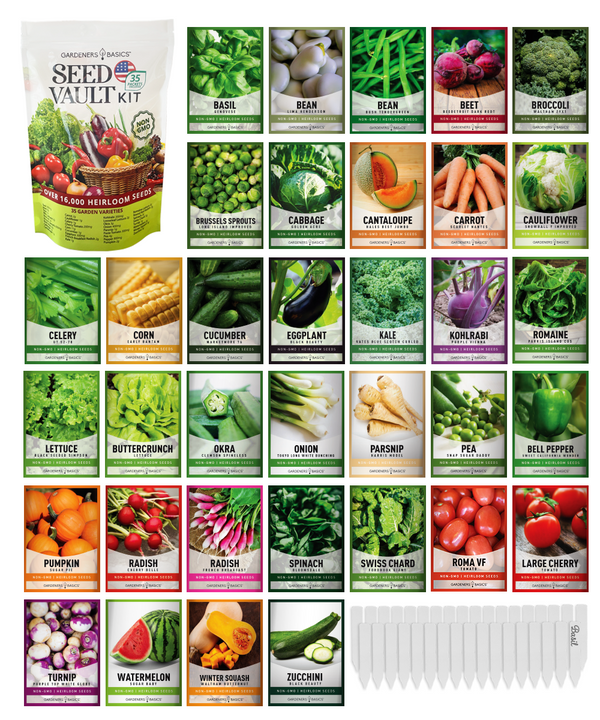
$49.95
Conclusion
Recapping the steps involved in learning to grow Viroflay spinach from seed requires careful attention to detail and a nurturing approach. Following the steps outlined in this article, you can successfully cultivate this delightful heirloom spinach variety and enjoy its numerous benefits.
Select high-quality Viroflay spinach seeds from a reputable supplier or nursery. Opting for organic or heirloom spinach seeds ensures both superior flavor and sustainability.
Next, prepare the soil by assessing its quality and pH level requirements. Incorporating organic matter into the soil will enhance its structure and fertility, creating an ideal environment for your spinach to thrive.
Sowing the seeds indoors at the right time is crucial for a successful start. Use seed trays or pots filled with well-draining potting mix to provide an optimal growing medium for your seedlings.
Once they have developed true leaves, transplant them outdoors in a partially shaded area that receives ample sunlight throughout the day. Caring for Viroflay spinach plants involves maintaining consistent moisture levels through regular watering routines while avoiding overwatering that may lead to the rotting of delicate roots.
Fertilize your plants using appropriate techniques to encourage healthy growth and abundant leaf production. Watch for common pests and diseases affecting your crop, utilizing natural remedies whenever possible.
When harvesting Viroflay spinach, pick large dark green leaves individually rather than uprooting entire plants at once to encourage regrowth throughout the growing season. Succession planting can help extend your harvest season by sowing new seeds every few weeks.
Growing Viroflay spinach is not only rewarding but also provides you with fresh and nutritious greens straight from your garden. With proper care and attention given to selecting high-quality seeds, preparing fertile soil, providing adequate light conditions, nurturing plant health through watering and fertilization, and implementing effective pest management strategies, you can enjoy the bountiful yields of this open-pollinated variety.
Whether for your salads, sautés, or smoothies, Viroflay spinach will add flavor and nutrition to your culinary creations. Embrace the joy of growing your spinach and experience the satisfaction of cultivating this exceptional heirloom variety.













